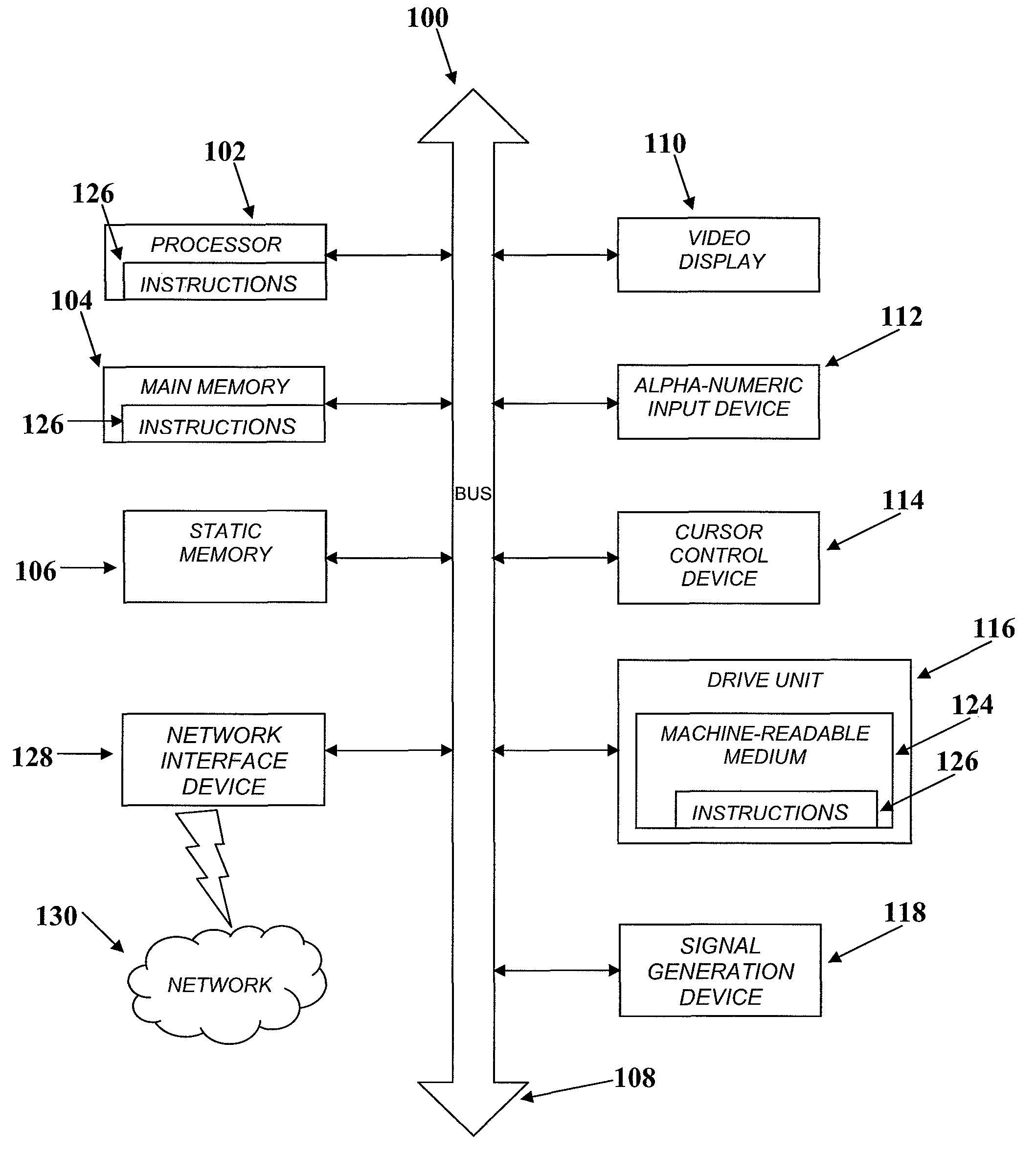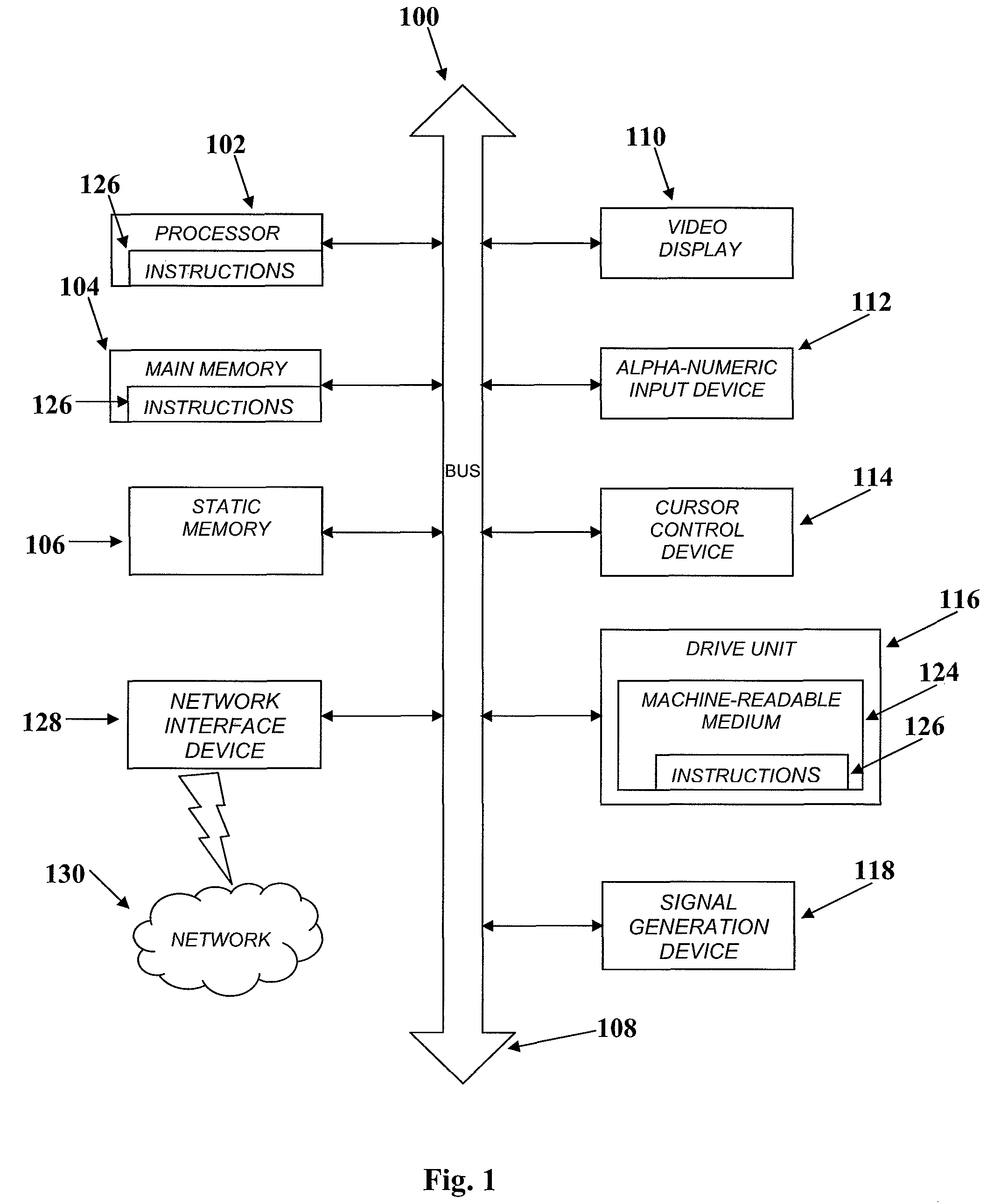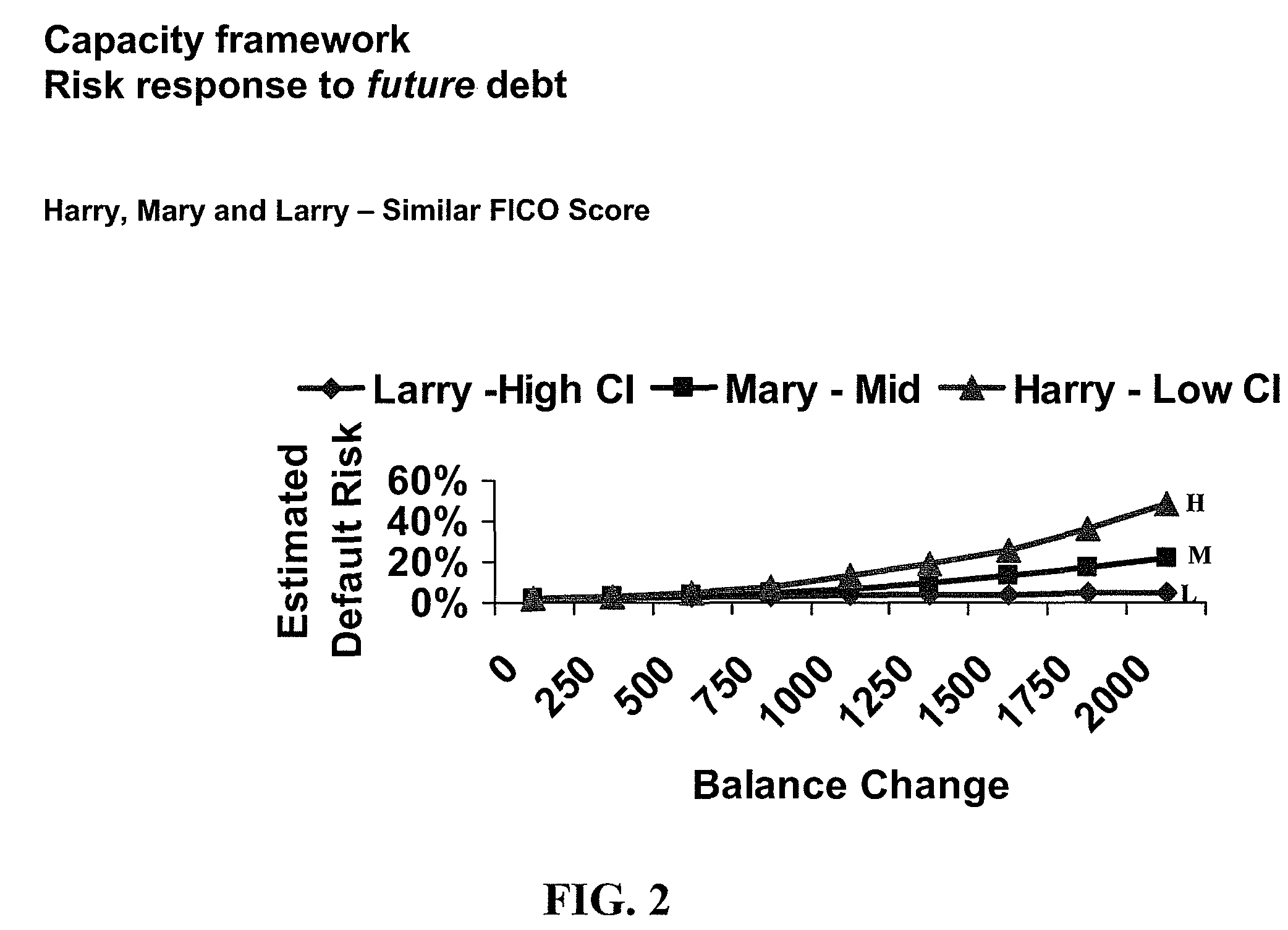Method and system for modeling future action impact in credit scoring
a credit scoring and future action technology, applied in the field of predictive model development, can solve the problems of not reflecting events, unable to address the relative impact of debts incurred, etc., and achieve the effect of improving snapshot prediction
- Summary
- Abstract
- Description
- Claims
- Application Information
AI Technical Summary
Benefits of technology
Problems solved by technology
Method used
Image
Examples
embodiment
Preferred Embodiment
[0028]Model based decisions are often based on data in which the intention is that the data changes as a consequence of the use of data. A frozen score, therefore, predicts an outcome assuming that all else is held equal. The technology herein goes further to include a person's tolerance to the range of possible changes that may occur shortly after the scoring date. This approach is referred to as future action impact modeling, in that it includes the range of possible future behavior into a fixed observation date occurring before these potential behaviors occur.
[0029]Generally, a snapshot-based score is used in relation to a specific activity or event. For example, when a consumer is purchases a home, a lender assesses the consumer's creditworthiness with a risk score. However, by definition, the action of purchasing the house changes the consumer's creditworthiness. Thus, it would be a great advantage to be able to, essentially, include the impact of a decision...
experiment i
[0126]Refer to FIG. 7 for the following discussion. One skilled in the art will recognize that, in the risk-scoring domain, a “bad” constitutes someone who has failed to repay their debts as promised. For one reason or another, these consumers that go on to show bad performance are unable to take responsibility for debts previously incurred. “Goods,” however, includes consumers with high income and ability to pay, and those with less ability, but more discretion not to spend beyond their ability to repay as promised. Accordingly, “goods” are not necessarily high-capacity. It was desired to validate the future impact model with a data set that would show whether it was possible to distinguish between “bads,” low-capacity “goods” and high-capacity “goods.” Experiment I involves a validation using a validation data set made up of credit bureau data provided by TRANSUNION, LLC, Chicago, Ill. The validation data set described herein involves a cohort of subjects all having a FICO score i...
experiment ii
[0140]FIGS. 10A-D provide a series of bar charts depicting performance vs. balance change for four segments, risk score=620-659 (FIG. 10A), 660-699 (FIG. 10B), 700-739 (FIG. 10C) and 740-700 (FIG. 10D). The present validation data set comprises credit bureau data regarding management of revolving credit card accounts. In this example, income is from a demographic database because different sources of income have different sources and missing rates. Another strength of this approach is that it does not rely on self-reported information, e.g. self-reported income, which is notoriously inaccurate. As shown in FIG. 10A, within each segment, as capacity increases, the “bad” rate decreases. Additionally, across segments, the “bad” rate decreases from one segment to the next, each segment corresponding to a higher FICO segment. Somewhat anomalously, in FIG. 10A, the bad rate for mid-level- and high-capacity exhibit a higher “bad” rate for low balances than for high balances. As in validati...
PUM
 Login to View More
Login to View More Abstract
Description
Claims
Application Information
 Login to View More
Login to View More - R&D
- Intellectual Property
- Life Sciences
- Materials
- Tech Scout
- Unparalleled Data Quality
- Higher Quality Content
- 60% Fewer Hallucinations
Browse by: Latest US Patents, China's latest patents, Technical Efficacy Thesaurus, Application Domain, Technology Topic, Popular Technical Reports.
© 2025 PatSnap. All rights reserved.Legal|Privacy policy|Modern Slavery Act Transparency Statement|Sitemap|About US| Contact US: help@patsnap.com



